All issues

Successor
Volume 32, Issue 4
Displaying 1-2 of 2 articles from this issue
- |<
- <
- 1
- >
- >|
-
[in Japanese]1958 Volume 32 Issue 4 Pages 141-148
Published: July 20, 1958
Released on J-STAGE: November 25, 2011
JOURNAL FREE ACCESSDownload PDF (1224K) -
Seasonal and Annual Fluctuation of Latent InfectionYoshitada TAMAMURA1958 Volume 32 Issue 4 Pages 149-165
Published: July 20, 1958
Released on J-STAGE: November 25, 2011
JOURNAL FREE ACCESSComplement fixation tests were carried out by the author et al 8 times in all with 3, 227 serum specimens of 862 japanese encephalitis patients from November 1951 to February 1954 in 3 parts of Tsukurimichi district of Toyama prefecture. No obvious case of japanese encephalitis were found during this investigation, though epidemics had been reported in the past in this district. These data were studied from various epidemiologic angles, particularly from the seasonal moments laying emphasis on the rate of positive and negative conversion of the test, since no due regard has been given to the rates.
I). For the following-up of seasonal fluctuation of complement fixation test, the rate of positive reaction alone is not sufficient for an exact study. In addition to that, the rate of positive conversion and that of negative conversion is to be taken into consideration.
II). The relation between positive conversion rate and negative conversion rate is given in the following formula: Y=94.23-3.12 x (Y and x are the actual values of negative and positive conversion rate during 3-4 months, respectively). And the two rates stand in an inverse relation. From the formula the theoretical value of negative conversion rate could be computed as 94.23%. The divergence between theoretical and actual value, 54.0-23.0% could be interpreted as due to interference of negative conversion through reinfection. The annual rate of negative conversion was computed as 80.8%. The annual rate of positive conversion was likewise calculated as 25.4%, when over 2 times regarded as positive, and 11.5%, when over four times regarded as positive.
III). Consequently, the real mean of positive reaction rate could only be adequately determined, when both values, negative and positive conversion rates were given.
IV). According to the seasonal shift of positive reaction rate, negative and positive conversion rate of complement fixation test, the season for latent epidemic could be assumed to be the period around summer, coinciding approximately with that of manifest infection. The annual divergence of epidemic period and intensity was also recognized in the latent infection, as was observed in the manifest infection.
V). These rates according to sex, age and year, respectively coincided with those of the total. That is ; the positive reaction rate and positive conversion rate reached the highest value around the summer, the negative conversion rate then being the lowest, while the converse relations were observed in winter, non-epidemical period of manifect infection. The divergence of epidemic period and intensity was also recognized.
VI). These results have elucidated the actual conditions of latent infection of japanese encephalitis and at the same time its seasonal fluctuation in combination with the results hitherto obtained.View full abstractDownload PDF (2608K)
- |<
- <
- 1
- >
- >|